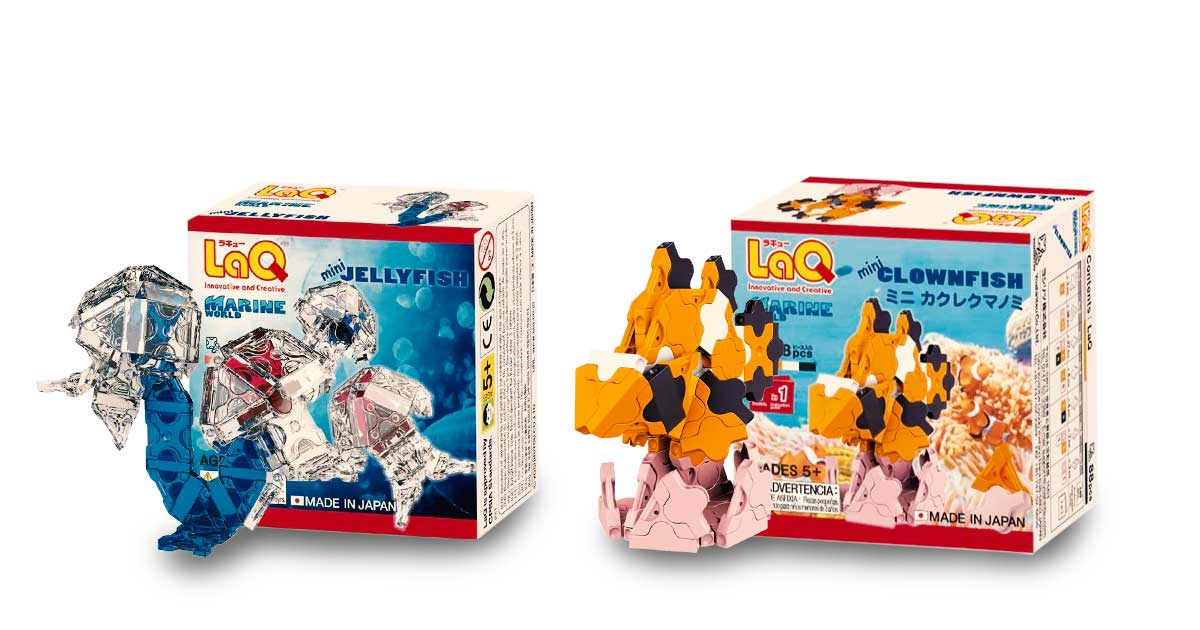How to Choose the Perfect Educational Toy for Any Age
Discover the ultimate guide to selecting toys that educate, engage, and entertain
In this guide, we’ll break down how to choose an educational toy tailored to different developmental stages, from infancy to adolescence. Whether you're looking for STEM kits, board games, or construction sets, we’ll help you navigate the best choices for every age.
| Educational Toys at a Glance | |
|---|---|
| Age Group | Best Toy Types |
| Infants (0-12 months) | High-contrast toys, rattles, teethers, textured plush toys |
| Toddlers (1-3 years) | Wooden puzzles, stacking blocks, push-pull toys, shape sorters |
| Preschoolers (3-5 years) | Building sets, role-play kits, interactive books, arts and crafts |
| Early Elementary (6-8 years) | Construction sets, beginner robotics, board games, science kits |
| Late Elementary (9-12 years) | Mechanical models, coding kits, STEM puzzles, complex builds |
| Teens (13+ years) | Advanced building kits, electronics, programming tools, 3D design |
What Makes a Toy Educational?
Choosin' the right educational toy isn't just about grabbin something that looks fun off the shelf—it's about finding somethin that helps little brains grow while they're havin a blast. Educational toys are them special playthings that do double duty: they entertain while also teaching valuable skills or concepts.
Have you ever watched a child completely absorbed in play? What's happening in their minds during those moments? They're actually building neural pathways, developing critical thinking skills, and exploring cause and effect relationships, all while having a giggle. Quality educational toys facilitate this magical process.
At Hearns Hobbies, we believe that the best educational toys grow with your child and adapt to their changing abilities. A proper educational toy challenges without frustrating, encourages without overwhelming, and most importantly, makes learning feel like play rather than work.
What separates a truly educational toy from just another plastic distraction? It's about purposeful design that targets specific developmental areas while remaining genuinely engaging. The best educational toys aren't the ones collecting dust on the shelf—they're the ones children return to day after day, discovering new possibilities with each play session.
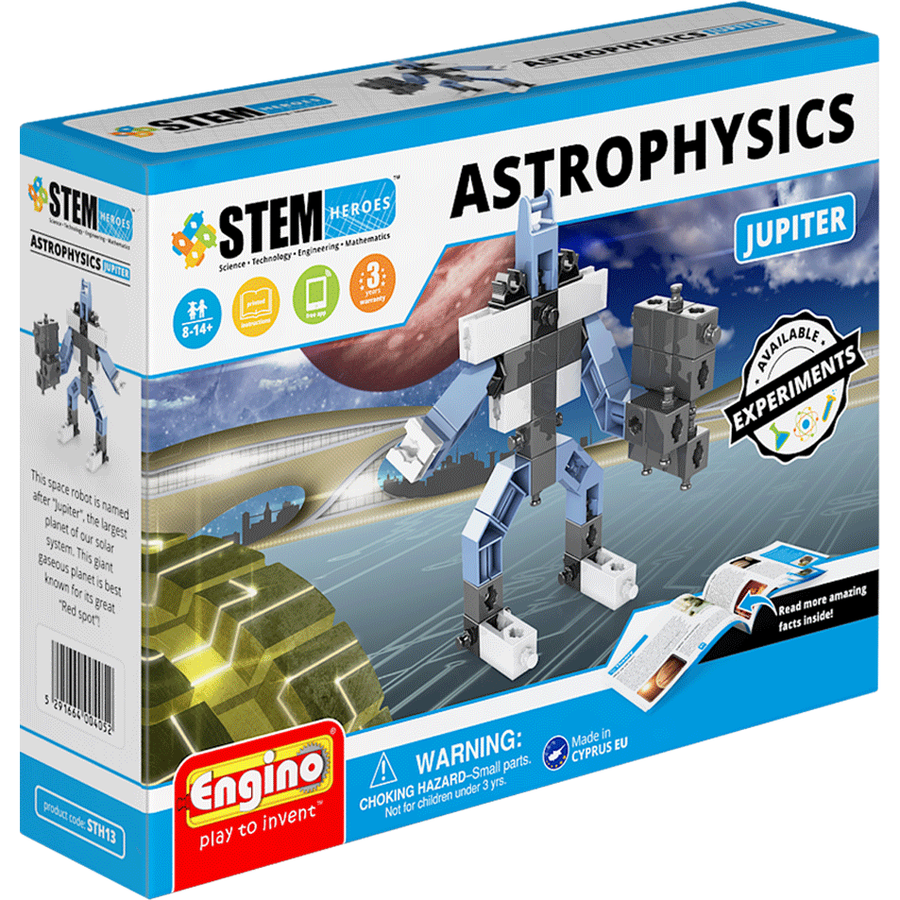
ENGINO STEM Hero Astrophysics Jupiter
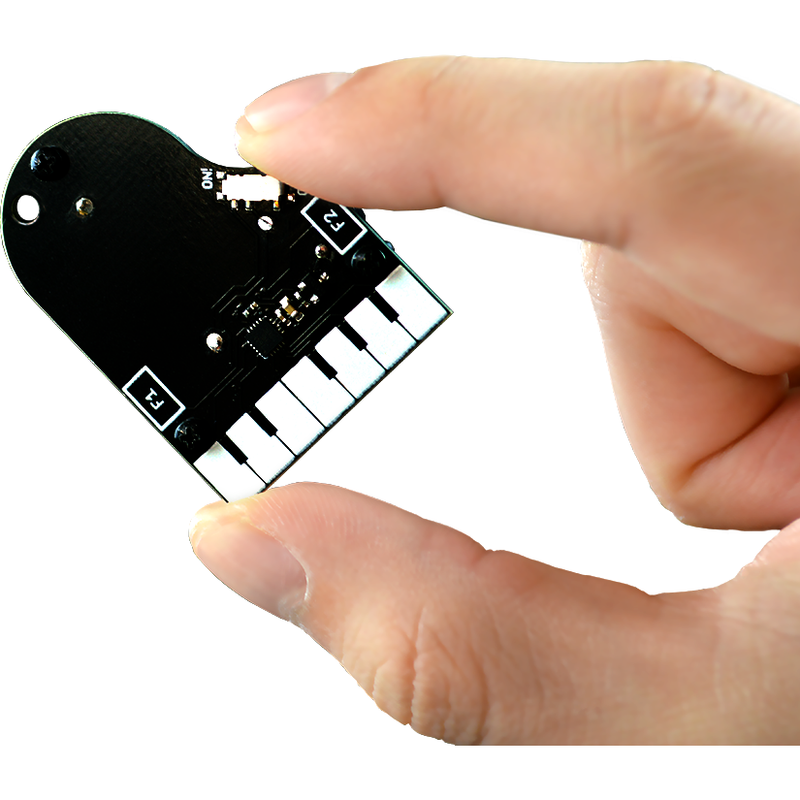
TINY CIRCUITS Tiny Piano
General Benefits of Educational Toys
Educational toys aren't just about keepin' the little ones busy while you're trying to get the washing done—they're proper brain boosters that lay the groundwork for lifelong learning. These clever playthings work their magic across multiple developmental areas, helping children build skills they'll use for years to come.
Have you ever noticed how a child's face lights up when they finally solve a puzzle? Or how they beam with pride after building a towering block structure? What's happening in these moments goes far beyond simple play. Educational toys stimulate cognitive development by challenging kids to think, reason, and solve problems in creative ways. They're like little workouts for growing brains!
Motor skills see massive improvements through educational play as well. Manipulating small pieces in construction toys refines fine motor control, while larger toys that encourage movement help develop gross motor abilities. The beauty of quality educational toys is how they seamlessly blend these physical challenges with mental ones.
Another brilliant thing about educational toys? They boost language development sumthin' fierce! When children play with others, they naturally practice communication skills, expand their vocabulary, and learn to express themselves. Even solo play with the right toys can strengthen language pathways as kids narrate their own adventures or read instructions.
Social-emotional development gets a proper leg-up from educational toys too. Sharing, taking turns, and collaborating on projects teaches empathy and cooperation. Many board games specifically target these skills, helping children navigate the complex social world while having a laugh.
The best educational toys grow with your child, offering new challenges and learning opportunities as they develop. Look for toys with multiple difficulty levels or play options to maximise their longevity.
Let's not forget about creativity and imagination! Open-ended toys without rigid rules allow children to express themselves freely, developing original thinking and problem-solving flexibility. This creative muscle-building pays dividends in later life, from school projects to career innovation.
Educational Toys for Infants (0-12 Months)
Babies are like little scientists, constantly exploring and making sense of their world through their senses. During these first crucial months, their brains are forming connections at an astonishing rate—more than a million new neural connections every second! Blimey, that's impressive, innit?
What should you look for in toys for this age group? Sensory stimulation is the name of the game. Infants learn primarily through touch, sight, and sound, so toys that engage these senses are top-notch choices.
| Developmental Need | Recommended Toys |
|---|---|
| Visual Development | High-contrast black-and-white patterns, mirrors, colourful mobiles |
| Auditory Stimulation | Rattles, musical toys, crinkly-textured books |
| Tactile Exploration | Textured toys, soft blocks, teethers with different surfaces |
| Motor Development | Grasping toys, play gyms, simple cause-and-effect toys |
High-contrast toys are particularly important for younger babies. Their developing vision responds best to bold patterns in black, white, and red. These aren't just pretty—they're essential for visual development. As babies grow, they become more interested in exploring textures and sounds.
During tummy time—which is crucial for strengthening neck and shoulder muscles—place a mirror or high-contrast cards where baby can see them. This encourages them to lift their head and engage with their surroundings. Our educational toy collection includes several options perfect for these early explorations.
Shape sorters introduce early concepts of object permanence and spatial relationships. When babies put objects into containers and take them out again, they're learning that things continue to exist even when they can't see them—a massive cognitive breakthrough! They're also practising hand-eye coordination and developing those all-important pincer grasp skills.
What about teethers and rattles? These aren't just for sore gums or making noise—they're proper multisensory learning tools. Different textures provide tactile stimulation, while sounds help babies connect actions with effects. Some even change colour when warmed, adding a visual element to the experience.
Safety First:
Always check toys for small parts that could pose choking hazards. For infants, ensure toys are washable and made from non-toxic materials. Regularly inspect for wear and tear, especially with teething toys.
Educational Toys for Toddlers (1-3 Years)
Toddlers are proper little explorers, aren't they? Constantly on the move and into everything! This age is all about newfound independence and curiosity. They're developing speech, refining motor skills, and beginning to understand how things work together. It's a brilliant time for introducing toys that challenge and expand these blossoming abilities.
What makes a toy perfect for toddlers? It needs to be durable (because let's be honest, toddlers are rough on their belongings), simple enough to use without frustration, but challenging enough to keep their interest. The best toys for this age group encourage problem-solving and creativity while supporting their physical development.
Wooden puzzles are absolute gold for toddlers. They teach shape recognition, improve hand-eye coordination, and build spatial awareness. Start with simple knob puzzles featuring just a few large pieces, then gradually introduce more complex options as their skills develop. The satisfaction on a toddler's face when they successfully place that last puzzle piece is priceless!
Stacking and nesting toys offer endless possibilities for creative play. Besides the obvious benefits for hand-eye coordination, these toys teach concepts like size comparison, serialization, and balance. Watch how a toddler experiments with different ways to stack blocks—they're not just playing; they're conducting physics experiments!
Have you considered how toddlers benefit from push-and-pull toys? These classics do much more than entertain. They help children develop gross motor skills, balance, and coordination as they navigate around furniture and through doorways. Many pull toys also incorporate elements that move or make sounds as they're pulled, creating a cause-and-effect relationship that fascinated young minds.
Role-play begins to emerge during this stage, making simple pretend play sets brilliantly educational. Toy phones, kitchen sets, and doctor kits allow toddlers to imitate adults and process their experiences through play. This type of imaginative play builds language skills, empathy, and social understanding.
Rotate toys regularly to maintain interest and stimulation. Toddlers don't need loads of toys available at once—too many choices can actually be overwhelming. Instead, swap toys in and out every few weeks to keep the play experience fresh.
Music and movement toys hit the spot for energetic toddlers. Simple instruments like drums, xylophones, and tambourines introduce concepts of rhythm and sound while supporting listening skills and coordination. Don't worry about the noise—these early musical experiences lay the groundwork for both musical aptitude and mathematical thinking!
Educational Toys for Preschoolers (3-5 Years)
Preschoolers are proper little sponges, absorbing knowledge and skills at an amazing rate. Their imaginations are running wild, their language is bloomin' like crazy, and they're starting to engage with more complex concepts. It's a magical time—one where the right toys can make a tremendous difference in their development.
What's happening in those busy preschool brains? They're developing greater independence, longer attention spans, and more sophisticated problem-solving skills. Their play is becoming more elaborate and social, with storylines and characters. Educational toys for this age group should support these developments while introducing early academic concepts in a playful context.
LaQ building sets are absolutely brilliant for preschoolers. These colourful interlocking pieces encourage creativity while developing fine motor skills and spatial reasoning. Children can follow simple patterns to create specific models or let their imagination run wild with open-ended building. The beauty of these sets is how they grow with your child—starting with basic shapes and progressing to complex structures.
Have you noticed how preschoolers love to act out stories and scenarios? Role-play toys like doctor kits, play kitchens, and dress-up clothes support this natural inclination. They're not just playing pretend—they're processing their experiences, practising social skills, and developing language abilities. When children pretend to be shopkeepers or firefighters, they're exploring different perspectives and building empathy.
Letter and number toys introduce early literacy and numeracy concepts without pressure. Magnetic letters, alphabet puzzles, and counting games lay the groundwork for future academic success. The key is keeping it playful—preschoolers learn best through hands-on experiences rather than formal instruction.
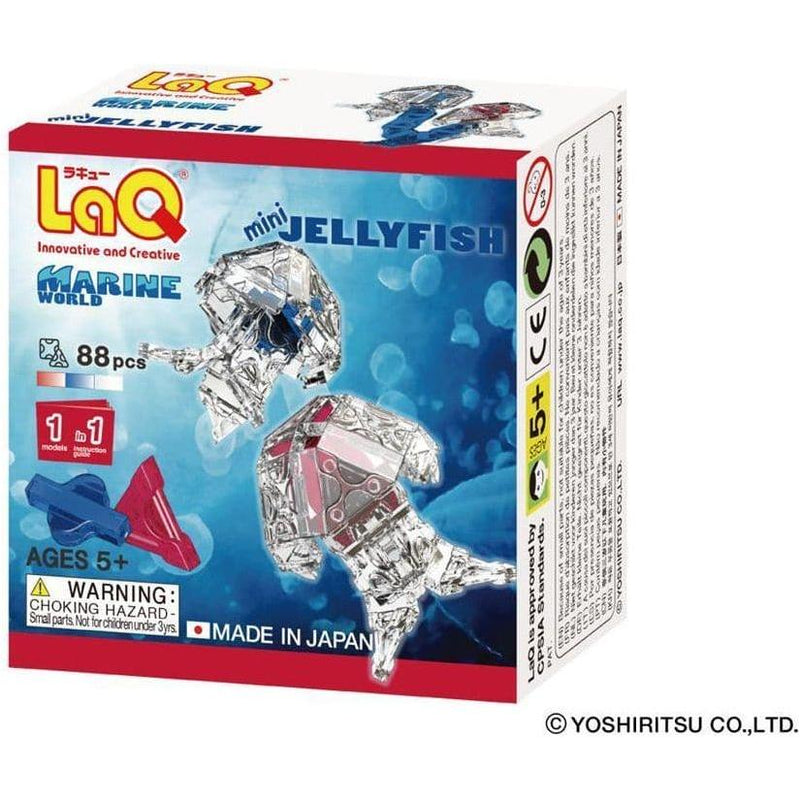
LAQ Marine World Mini Jellyfish (Ages 5+)
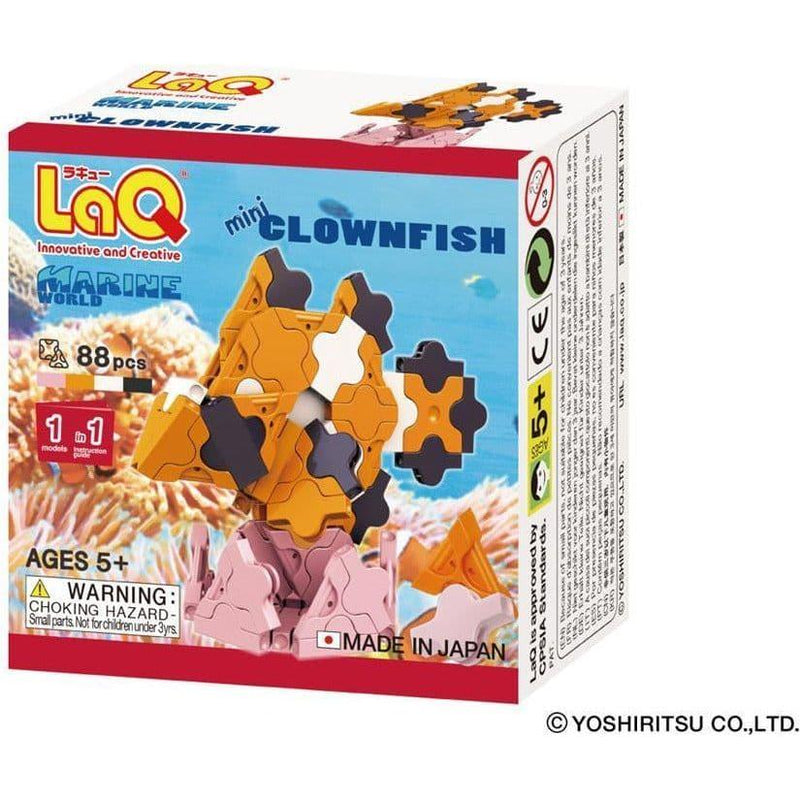
LAQ Marine World Mini Clownfish (Ages 5+)
Art supplies take on new importance during the preschool years. Crayons, child-safe scissors, and modelling clay strengthen fine motor skills while encouraging self-expression. When children draw, cut, and mould, they're developing the hand muscles and coordination needed for writing. Plus, the open-ended nature of art activities fosters creativity and problem-solving.
Science exploration kits designed for preschoolers introduce basic concepts through sensory experiences. Magnets, prisms, and simple experiments capture their natural curiosity about how things work. These early encounters with scientific principles build a foundation for later learning and foster a positive attitude toward science.
What about games? Simple board games with straightforward rules teach turn-taking, following directions, and coping with winning and losing. They also introduce strategic thinking and planning ahead. Look for games with educational elements like colour matching, pattern recognition, or early counting skills.
Tip for Parents:
Join in your preschooler's play occasionally. Your participation adds language, complexity, and social elements to the experience. Ask open-ended questions like "What do you think will happen if...?" or "How could we solve this differently?" to extend their thinking.
Educational Toys for Early Elementary (6-8 Years)
Early elementary years mark a brilliant transition period where children's cognitive abilities take a proper leap forward. Their attention spans grow longer, their reasoning skills become more sophisticated, and they're ready for more complex challenges. This is when educational toys can really shine, offering deeper learning experiences that align with school subjects while maintaining that crucial element of fun.
Have you noticed how early elementary kids start to develop specific interests? Some might be fascinated by dinosaurs, others by space, and still others by art or music. This is the perfect time to nurture these interests with specialized educational toys that expand their knowledge in these areas.
Meccano construction sets are absolute gold for this age group. These engineering-focused building toys introduce children to mechanical principles, spatial reasoning, and problem-solving. Following the instructions to build a specific model teaches children to follow multi-step directions—a vital skill for academic success. And when they venture into creating their own designs, they're developing engineering thinking and creativity.
Science kits designed for this age range allow children to conduct simple experiments and discover scientific principles firsthand. What's better than learning about chemical reactions by actually watching them happen? These hands-on experiences make abstract concepts concrete and memorable. Look for kits exploring magnetism, simple machines, or basic chemistry for starters.
Board games take on new importance during these years. Beyond the social skills they teach, many games for this age group incorporate educational elements like vocabulary building, mathematics, or strategic thinking. Board games that require planning several moves ahead help develop executive function skills that are crucial for academic success.
Skill Focus:
Early elementary years are brilliant for developing persistence and resilience. Choose toys that offer the right level of challenge—difficult enough to require effort but not so hard they cause frustration. Celebrate the process of learning, not just the final result.
Beginner robotics kits introduce coding concepts in a tangible, engaging way. These toys bridge the gap between physical and digital play, teaching logical thinking and cause-effect relationships. Children learn to give precise instructions and solve problems methodically—skills that transfer directly to academic subjects like maths and science.
What about art supplies? Don't underestimate their educational value! More advanced art kits for this age group teach colour theory, perspective, and composition while encouraging self-expression. Creating art develops fine motor control, spatial awareness, and attention to detail—all skills that support academic learning across subjects.
Reading-focused toys and games deserve special mention here. As children master basic literacy, toys that make reading fun and rewarding help solidify these skills. Word games, storytelling sets, and activities that encourage reading comprehension are brilliant investments in your child's educational future.
Educational Toys for Late Elementary (9-12 Years)
Late elementary children are developing more independence in their thinking and learning. They're ready for toys that offer genuine challenges and opportunities to apply knowledge in creative ways. This age group craves mastery and often enjoys projects that take time to complete and result in something they can be proud of.
UGears mechanical models are perfect examples of educational toys that challenge older elementary children. These intricate wooden models require careful assembly and teach principles of mechanics and engineering. The satisfaction of building a working model—one with gears that turn and parts that move—provides motivation to persist through complex instructions. Plus, they're properly gorgeous when completed!
Coding kits take on new sophistication for this age group. Children can move beyond basic block-based programming to more advanced concepts, creating games or controlling robots with their code. These activities develop computational thinking skills that are increasingly important in today's world. Plus, they're having such fun they don't even realize they're learning computer science principles!
Have you noticed how this age group loves collecting things? Educational collection kits—whether they focus on rocks, insects, or historical artifacts—teach classification skills and attention to detail. They also encourage research as children want to learn more about their collections. It's a natural way to develop both academic knowledge and organizational skills.
| Subject Area | Recommended Educational Toys |
|---|---|
| Science | Microscopes, advanced chemistry sets, weather stations, astronomy kits |
| Technology | Coding kits, simple electronics sets, digital creation tools |
| Engineering | Advanced construction sets, mechanical models, hydraulic systems |
| Mathematics | Strategy games, geometric puzzles, fractions kits, money games |
| Language Arts | Advanced word games, storytelling kits, creative writing prompts |
STEM puzzle games challenge spatial reasoning and logical thinking skills. These puzzles often have multiple solutions or difficulty levels, allowing children to progress at their own pace. They're brilliant for developing persistence and problem-solving strategies—skills that transfer directly to academic success.
Strategy board games really come into their own during these years. Games that require planning, resource management, and anticipating opponents' moves develop executive function skills and critical thinking. They also teach children to cope with winning and losing gracefully—an important life skill!
Don't forget that children this age still need plenty of physical activity. Educational toys that get them moving—like orienteering sets, building kits that result in outdoor equipment, or science activities that require exploration—combine physical and mental development brilliantly.
What about art and music? These subjects are sometimes overlooked in discussions of educational toys, but they're crucial for well-rounded development. More advanced art kits, musical instruments, and composition tools help children express themselves while teaching discipline and attention to detail.
Educational Toys for Teens (13+ Years)
Teens are on the cusp of adulthood, with increasingly sophisticated thinking skills and interests. They're capable of handling complex concepts and often enjoy educational toys that connect to potential career paths or real-world applications. The best educational toys for teens respect their maturity while challenging them to develop new skills.
Nanoblock sets offer a proper challenge for teens with their intricate designs and tiny building pieces. These highly detailed models require patience and precision, developing fine motor skills and spatial reasoning. The impressive results—whether architectural landmarks or complex sculptures—provide a sense of accomplishment that boosts confidence.
3D printing kits introduce teens to cutting-edge technology while teaching design principles and problem-solving. These kits allow teens to move from concept to physical object, experiencing the complete design process. It's not just about the technology—it's about developing creative thinking and practical engineering skills.
Have you considered how educational toys can help teens explore potential career interests? Advanced chemistry sets, architectural design kits, or digital creation tools allow teens to try on different roles and see what resonates with them. These experiences can inform future educational and career choices.
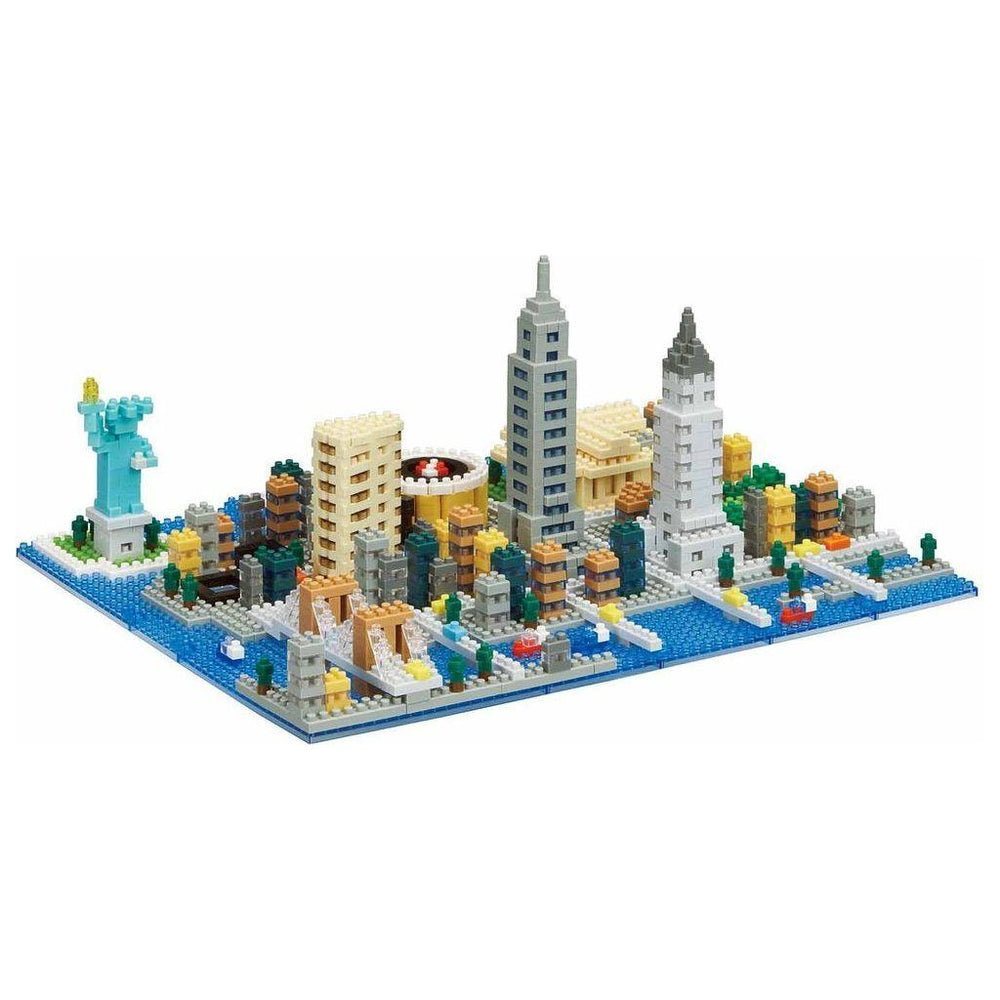
NANOBLOCK New York Deluxe
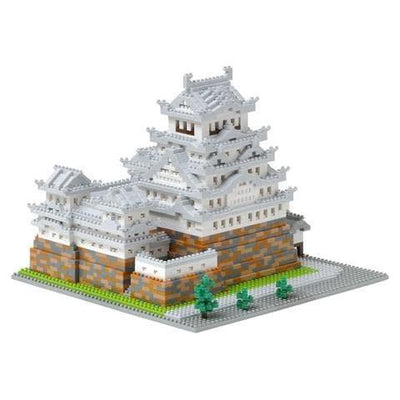
NANOBLOCK Himeji Castle Deluxe
Programming courses and electronics kits take teens deeper into the world of technology. These more advanced kits teach real-world skills that could lead to future careers in tech fields. They also develop logical thinking, attention to detail, and persistence—qualities that serve teens well in all areas of life.
Creative pursuits remain important during the teen years. Advanced art supplies, music production tools, or photography equipment allow teens to express themselves while developing technical skills. These activities can also provide emotional outlets during the sometimes turbulent teenage years.
Don't forget about strategic games! Complex board games, particularly those with economic or political themes, help teens understand systems thinking and cause-effect relationships. They're also brilliant for developing negotiation skills and understanding different perspectives.
Supporting Independence:
Educational toys for teens should encourage independent learning and exploration. Look for options that provide initial guidance but allow teens to set their own goals and solve problems in their own way.
Additional Considerations When Choosing Educational Toys
Selecting the right educational toy involves more than just matching age ranges. Several other factors should influence your choice to ensure the toy provides maximum benefit and engagement for the child.
Age appropriateness goes beyond safety considerations—it's about matching the toy to the child's developmental stage. A toy that's too simple will bore a child, while one that's too advanced might frustrate them. The sweet spot is a toy that challenges without overwhelming. Many toys on our educational toys page include age recommendations based on developmental milestones.
Have you considered the importance of a toy's "open-endedness"? Toys with multiple uses or play possibilities offer better value and longer-lasting engagement. A good rule of thumb: the more a toy does, the less the child has to do—and it's the child's active participation that drives learning.
Safety is paramount when choosing any toy, but especially important for educational toys that might include small parts or special materials. Always check that toys meet Australian safety standards and are appropriate for the specific child's abilities and tendencies. Are they likely to put things in their mouth? Do they have allergies to certain materials? These considerations should guide your choice.
| Consideration | Questions to Ask |
|---|---|
| Child's Interests | What topics or activities does the child already enjoy? How can an educational toy build on these interests? |
| Learning Style | Is the child visual, auditory, or kinesthetic? Which toys match their preferred way of learning? |
| Durability | Will the toy withstand regular use? Is it made from quality materials that will last? |
| Storage | How will the toy be stored? Does it come with a storage solution or need one? |
| Value for Money | Does the educational value and play potential justify the price? Will it grow with the child? |
Multi-sensory engagement is another crucial factor. Toys that involve multiple senses—sight, hearing, touch, and sometimes even smell—create richer neural connections and more memorable learning experiences. Look for toys that combine different sensory elements to maximize learning potential.
What about the child's individual interests and learning style? The most educational toy in the world won't teach much if it sits unused on a shelf. Consider what genuinely excites the child and seek educational toys that align with these interests. Some children learn best through hands-on exploration, others through visual information, and still others through rhythmic or musical activities.
Quality and durability matter too. Educational toys often represent an investment in a child's development, so it's worth choosing products made from durable materials that will withstand enthusiastic play. Check for sturdy construction and non-toxic materials, especially for younger children.
Remember that the best educational toys encourage active rather than passive engagement. Look for toys that require the child to think, create, solve problems, or physically interact rather than simply watching or listening.
Consider the play environment when selecting educational toys. Will the toy be used primarily at home, in the classroom, or on the go? Some toys require space to spread out, while others are more compact and portable. The right choice depends on where and how the toy will be used.
Lastly, think about how the toy might foster social interaction. While independent play is valuable, toys that encourage collaboration and communication help children develop crucial social skills. Board games, construction sets, and role-play toys can all create opportunities for cooperative play and social learning.
Frequently Asked Questions
How do I know if a toy is truly educational?
A proper educational toy engages children actively rather than passively, challenges them at an appropriate level, and teaches specific skills or concepts. Look for toys that encourage problem-solving, creativity, or specific developmental areas like fine motor skills or spatial reasoning. The best educational toys are those children return to repeatedly, discovering new possibilities with each play session. Remember that a truly educational toy should be fun first—learning happens most effectively when children are genuinely engaged.
What's more important—digital or traditional toys?
Both digital and traditional toys have their proper place in a child's development. Traditional toys often provide more tactile experiences and open-ended play possibilities, which are crucial for sensory development and creativity. Digital toys, when chosen thoughtfully, can teach specific skills like coding or offer interactive learning experiences. The key is balance—children benefit most from a variety of play experiences. For younger children especially, hands-on physical toys should form the foundation of their play collection.
How many toys should my child have access to at once?
Surprisingly, having too many toys available simultaneously can actually overwhelm children and lead to less focused play. Consider rotating toys regularly—keeping some accessible while storing others away. This approach maintains novelty and interest while encouraging deeper engagement with each toy. Quality matters more than quantity! A small collection of well-chosen educational toys that target different developmental areas will serve your child better than dozens of less thoughtful options.
Are expensive toys always better?
Not necessarily! Price doesn't always correlate with educational value. Some of the most beneficial toys—like blocks, art supplies, or simple puzzles—can be quite affordable. When considering a higher-priced toy, evaluate its durability, versatility (can it be used in multiple ways?), growth potential (will it remain useful as your child develops?), and whether it offers unique educational benefits that justify the cost. Sometimes investing in a quality construction set or science kit that will last for years makes more sense than buying numerous cheaper toys with limited play value.
How do I encourage my child to engage with educational toys?
The best way to encourage engagement is to join in occasionally! When adults play alongside children, they model curiosity, perseverance, and problem-solving. Ask open-ended questions like "What might happen if...?" or "How else could we use this?" rather than directing play. Provide just enough support to prevent frustration without solving problems for them. Also consider your child's interests—educational toys aligned with topics they already enjoy are more likely to capture their attention. Finally, limit screen time to ensure children have ample opportunity to engage with hands-on educational toys.
Conclusion
At every developmental stage, the right educational toys can make a world of difference, supporting children as they grow into confident, capable learners. Whether you're selecting a simple wooden puzzle for a toddler or an advanced coding kit for a teen, remember that the most valuable educational toy is one that sparks joy while gently challenging growing minds.
What separates a truly excellent educational toy from just another distraction? It's one that children return to again and again, discovering new possibilities with each play session—a toy that grows with them, adapts to their changing abilities, and makes learning feel like the adventure it should be.
Final Thought:
When you find yourself observing a child completely absorbed in play with an educational toy—eyes bright with concentration, hands busy creating or solving, mind fully engaged—you're witnessing the magic of learning through play. These moments are precious foundations for a lifetime of curiosity and discovery.
 is here! Shop now, pay later in 4 easy installments
is here! Shop now, pay later in 4 easy installments

